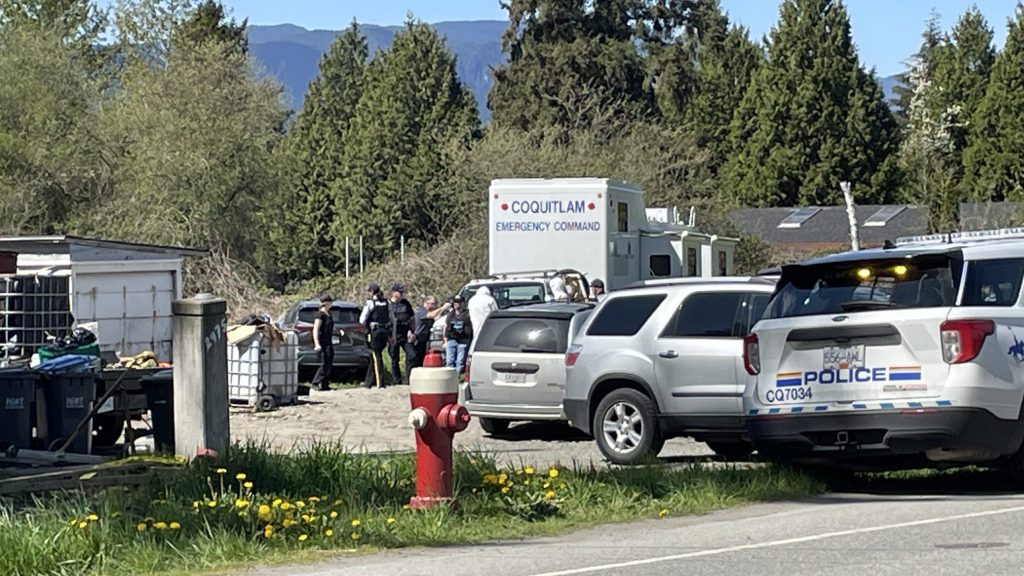Where Trump won: A closer look at county-level data in key states
Posted December 8, 2016 4:30 am.
Last Updated December 8, 2016 5:00 am.
This article is more than 5 years old.
WASHINGTON – One month ago, Donald Trump shocked the world. He won the White House by capturing five key states — including several that hadn’t voted Republican in decades.
The Canadian Press examined his wins in Wisconsin, Michigan, Ohio, Pennsylvania and Florida.
In an effort to understand how Trump won these states, where he won them and with which voters, it built a database of every county, with demographic characteristics and voter behaviour dating back to 2004.
Some findings:
— Clinton lost, more than Trump won
In three of the states, the Democratic vote collapsed far more than the Republican vote grew: Ohio, Michigan and Wisconsin. Hillary Clinton got far fewer votes than not only Barack Obama in 2012, but John Kerry 12 years ago.
She received a whopping 400,000 fewer votes than Obama in Ohio; 300,000 fewer in Michigan; 232,000 fewer in Wisconsin. Trump’s gains here were more modest. He barely finished ahead of Mitt Romney in Wisconsin, got 178,000 more votes in Ohio and 168,000 more in Michigan.
Democrats lost those states — together worth 44 electoral college votes — because their voters stayed home, opted for a third party or switched to Trump. Victory here would have put Clinton in the White House.
— Trump gained, big-league, elsewhere
It was a different story in Pennsylvania and Florida. Trump’s numbers exploded there.
He grew the Republican vote in Florida by 11 per cent and 450,000 ballots more than Romney. He did better than Romney in 62 of 67 Florida counties. In Pennsylvania, he did better in 64 of 67 counties, outperforming Romney by 294,300 votes and George W. Bush in 2004 by 191,330.
He gained virtually everywhere — he even picked up some votes in hostile cities like Miami and Philadelphia.
— A coal-powered win
Where there were fossil fuels, there were big Republican gains. Trump won 47 per cent more votes than Romney in the aptly named Carbon County, his biggest such swing in Pennsylvania and one of several in that state’s Coal Region.
It was the same all the way down Appalachia — the mountain range that separates the U.S. east and midwest.
In Ohio, the biggest batch of new Republican votes — 11,100 — came in oil-and-gas fracking country. Mahoning County used to be known for its steel, unions, and Democratic voters. Obama won the county by 28 percentage points. Yet Trump nearly tied Clinton. Fracking was an election issue. A referendum to ban it in Mahoning was on the ballot again — it failed for the sixth time.
The phenomenon echoed in West Virginia. The county where coal was first found there, Boone, voted 55.5 per cent for Obama in 2008 and 32.9 for him in 2012, and just 20.6 per cent for Clinton.
— Cities, suburbs, countryside: Where the election was won
To use a boxing metaphor, Trump delivered an uninterrupted string of jabs in the countryside; the occasional haymaker in the suburbs; and protected his own chin, staving off danger in the cities.
In tiny counties, he gained votes everywhere. Take little Gallia County, Ohio. Fully 60 per cent more people voted for Trump than Romney. It wasn’t that many votes — Trump got just 9,500 in Gallia. But the jabs added up: Trump got more votes than Romney in 81 of 88 Ohio counties; in 64 of 67 Pennsylvania counties; in 75 of 83 Michigan counties; and 62 of 67 Florida counties.
Trump got large batches of new votes in some suburbs and small cities. In suburban Detroit, he picked up more than 30,000 versus Romney. In Florida, he gained more than 115,000 on the outskirts of Tampa and Fort Myers.
He lost cities. That’s to be expected for Republicans. But Trump kept it closer. He did it different ways. He gained votes in Detroit and Philadelphia, compared to Romney. He lost votes in central Cleveland and Milwaukee, compared to 2012 — but Clinton lost even more.
— Education
Educational attainment was a strong indicator of county trends.
The biggest Republican gains were in counties with fewer post-secondary degrees and more high-school dropouts. The rare places Democrats gained votes had an above-average rate of degree-holders.
Clinton gained votes in just three of 88 Ohio counties. The rate of people with college degrees in these three counties, around Columbus and Cincinnati, was almost twice the state average — and almost triple the three counties that swung hardest toward Republicans.
A whopping five times greater ratio of degree-holders lived in the Ohio counties where Republicans lost votes from 2012, compared with the three where Republicans experienced their greatest percentage gains.
It was similar in other states.
— Third parties
Smaller parties might have made a difference. The Libertarians and Greens made enormous gains — getting almost five times more votes, combined, in Wisconsin and Florida than in 2012; more than three times in Ohio; and almost triple in Pennsylvania.
It’s unclear how many states they might have flipped. In two states, the Greens got more votes than Clinton’s margin of defeat (Wisconsin, Michigan). It was nearly the same in Pennsylvania.
Libertarians did better. The reason it’s hard to state with certainty the impact of third-party voters is a lack of clarity about how many would have stayed home as a second choice, or which party they would have backed.
— Race
Whiter areas swung hardest for Trump. In Ohio, the half-dozen counties where he had his biggest gains over Romney had a black population of two per cent; in the half-dozen where he lost the biggest share, the black population was 16 per cent.
It was similar elsewhere.
In Florida, Clinton only gained votes in six counties among 67. The demographics there were 43 per cent white, 17 per cent black and 35 per cent Latino. The six Florida counties where she lost the most votes were 80 per cent white.
— The military connection
Trump’s connection to the military goes beyond having several generals in his cabinet.
The presence of veterans was correlated to whether he gained or lost votes in a county. In Michigan counties, the average number of veterans is about 85 per 1,000 residents. In the eight counties where Republicans’ vote declined, it was 57. In their eight most-improved counties, it was 96.
There was a similar pattern elsewhere.
— Age
The greyest counties were golden for Trump. The oldest county in America delivered Republicans’ second-biggest percentage increase of votes in Florida. That was Sumter, which includes huge retirement communities.
Florida’s three counties with the biggest swings for Trump averaged a median age of 52. In Florida counties where Republican votes declined most, the median age was 33.
That pattern repeated itself, albeit less dramatically, in other states.










